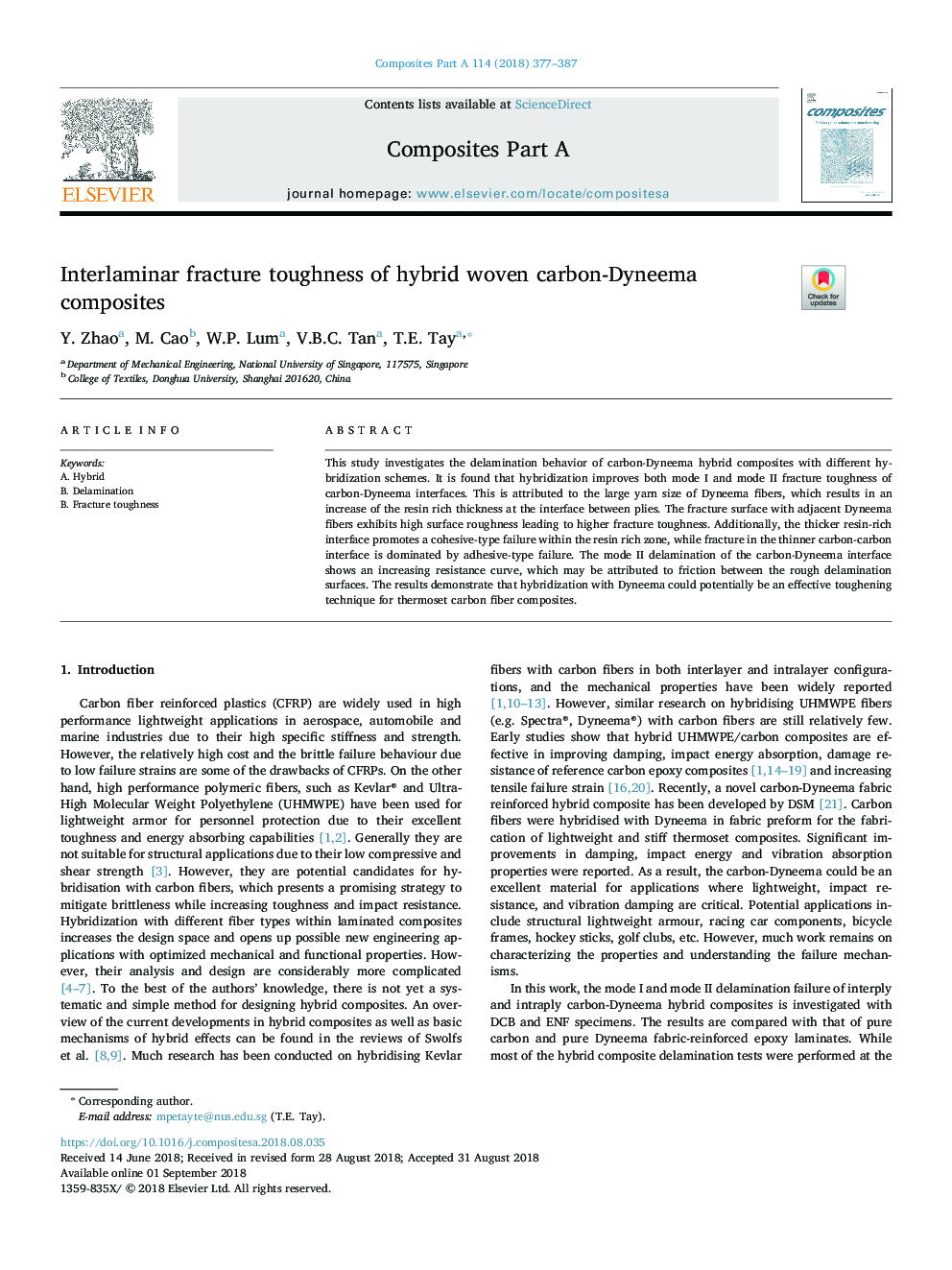| Article ID | Journal | Published Year | Pages | File Type |
|---|---|---|---|---|
| 10128372 | Composites Part A: Applied Science and Manufacturing | 2018 | 11 Pages |
Abstract
This study investigates the delamination behavior of carbon-Dyneema hybrid composites with different hybridization schemes. It is found that hybridization improves both mode I and mode II fracture toughness of carbon-Dyneema interfaces. This is attributed to the large yarn size of Dyneema fibers, which results in an increase of the resin rich thickness at the interface between plies. The fracture surface with adjacent Dyneema fibers exhibits high surface roughness leading to higher fracture toughness. Additionally, the thicker resin-rich interface promotes a cohesive-type failure within the resin rich zone, while fracture in the thinner carbon-carbon interface is dominated by adhesive-type failure. The mode II delamination of the carbon-Dyneema interface shows an increasing resistance curve, which may be attributed to friction between the rough delamination surfaces. The results demonstrate that hybridization with Dyneema could potentially be an effective toughening technique for thermoset carbon fiber composites.
Related Topics
Physical Sciences and Engineering
Materials Science
Ceramics and Composites
Authors
Y. Zhao, M. Cao, W.P. Lum, V.B.C. Tan, T.E. Tay,
